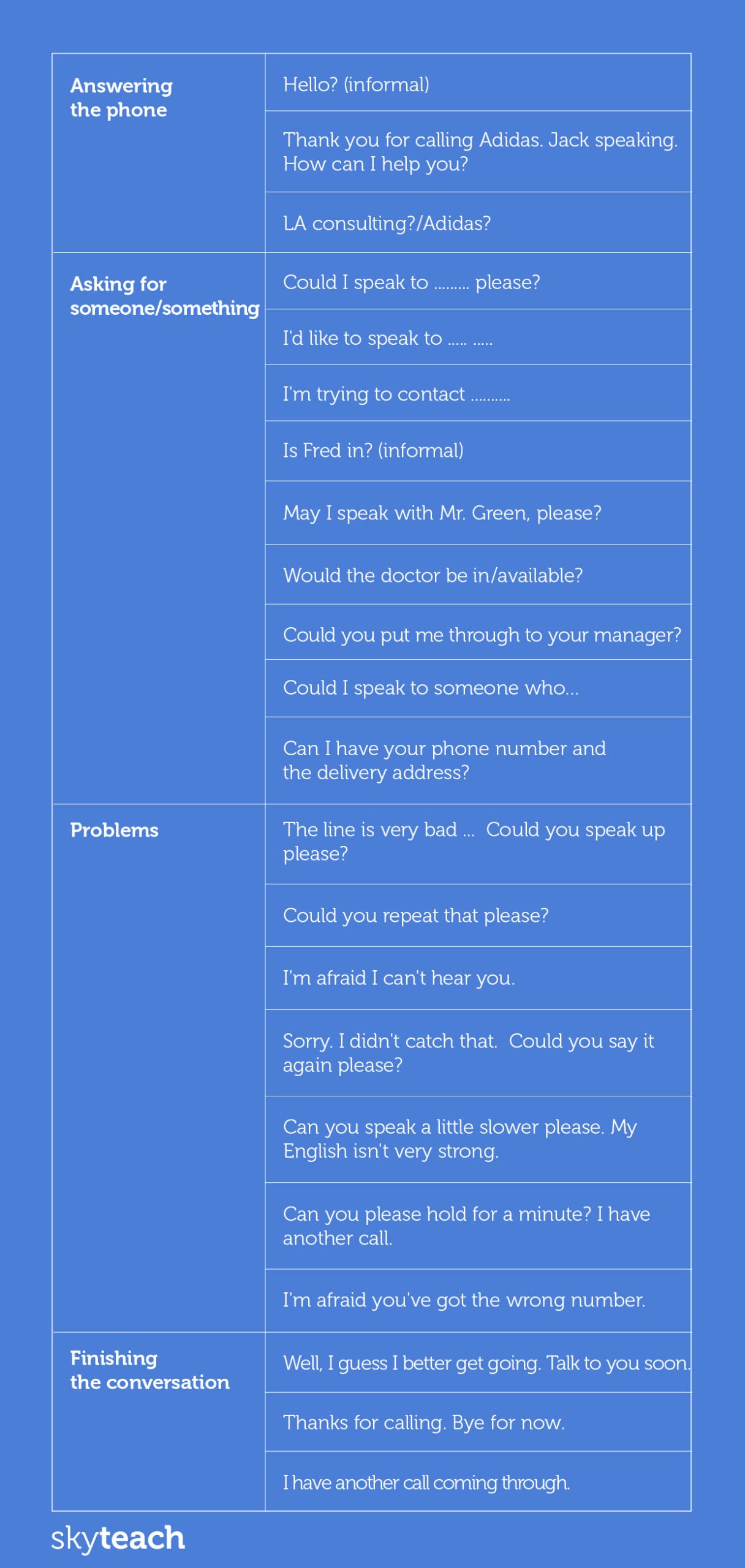Using functional language is one of the key aspects of language fluency. By functional language we mean the language we can use to order food in the restaurant, to make a small talk, to buy something from a shop, to ask for directions, etc. This is the language that determines the communicative competence of the learners away from the guided tasks created and practised in the classroom. Hence, to make sure learners get the hold of this type of language, we should integrate it into our curriculum and teaching materials.
Most of the textbooks offer activities that practice the functional language. They have nicely developed dialogues, exercises, list of phrases to refer to, etc. Teaching telephone language is an essential part of today’s business environment as a lot of business communication is happening between people from different countries using English as a common language. To prepare our students to be ready for those situations, the functional language of telephoning should be dealt with.
The lesson described below has been tested several times with groups of different backgrounds and has always been quite successful in helping the students practice Telephone language. Considering the language introduced in the lesson, I have been using it with B1 and higher levels.
Warmer
Show a picture of 2 telephones and let students tell you how they have changed through time. Brainstorm as many ideas as students have. I use the ones below:
This sets the students minds on the topic in general. It’s quite interesting as students are talking about real-life developments.
Lead-in
Distribute the following questions to a pair/group of students. Ask them to comment on the questions by giving as many details as possible. Students will need to interview each other as they will get different lists of questions. Time the students for 4-5 minutes to do so.
Make sure, students read the questions for one another instead of showing them to each other. It boosts their listening comprehension as well. The bold words might need to be pre-taught before starting this activity depending on the language background of your learners.
You can use/add a different question list depending on your target audience’s background and experience in telephone conversations in English.
Student A
- Do you think there is much difference between makes and/or models of mobile phones? Which do you think is the best?
- How important is your mobile phone in your business and personal life?
- Do you send and receive many text messages? Do you use a special “language” for mobile phone text messages or do you use normal language?
- What was life like before cell phones?
- What cell phone functions are important for you?
- What do you say or do when somebody calls and asks for your colleague who isn’t there?
Student B
- What is your opinion of hands-free mobile phones?
- Do you think the call charges for cell phones are reasonable?
- Do you prefer calling or texting? Why?
- Do you send and receive many text messages? Do you use a special “language” for mobile phone text messages or do you use normal language?
- Some people claim that radiation from mobile phones causes brain damage. What is your opinion? What do you do to avoid it?
- What do you say or do when someone calls you and tries to sell something?
When the time is up, choose a couple of questions to ask for open class feedback (OCFB). I use the following ones:
Student A — Q3, a nice question to elicit some abbreviations like ASAP (as soon as possible), EOM (end of message), B2B (business to business), etc.
Student A — Q4, works well if you have covered comparative forms before.
Student A — Q6 & Student B — Q6 elicits some language that the students already know. I normally put the nice phrases they come up with on the board for visual learners.
These are good ones to initiate discussion and prepare the students for the practical section.
Language Focus
Board the following categories or distribute them on a poster for the students to brainstorm some language that can be used for each section. Students can do this in pairs/groups of 3.

When the students are done, ask them to look at the other groups’ phrases and compare with theirs to see how many similar/different phrases they had come up with. You can ask the pairs/groups of students to walk around, look at other students’ phrases and add theirs with a different colour marker. This gives the students a chance to practice some functional language through repetition.
Next, cut up the below phrases and distribute them to the pairs/groups of students to match to the above-mentioned categories.
This is the language I have been using with my B1 group of students.

When the students are done, distribute the above table to check their answers.
When the answers are checked and you have dealt with student questions (as there might be some words they have difficulty understanding with), you will need to pass to some practice.
Practice
Ask students to sit back to back to simulate a telephone call. They are sitting back to back not to see each other. This makes it closer to reality and makes it more difficult to listen to each other.
Distribute the role cards, (adapted from teachingenglish.org) time the students for 3 minutes to read the cards and clarify any words or phrases they don’t know.
Once the students are ready, ask them to start the call and tick the phrases they use in their speech. The person who uses the most phrases wins. This will make them more responsible for paying attention to the target language.
With weaker groups, you can demonstrate the first call with a stronger student first.
When the students are done, ask a couple of pairs to role-play the same dialogue open class. The rest of the class should listen and tick the phrases the pair is using. This will give them a chance to get more exposure to the language.
Homework
As homework, I normally ask the students to make a telephone call to each other, record it and use as many of the target phrases as possible. They can use the same role cards they received in class by swapping between each other.
Later on, when you listen to the recordings, it’s a good idea to conduct an error correction slot to address the language issues if any. Here is more on how to make error correction more effective.






 Маргарита Аветисян
Маргарита Аветисян 
 Вероника Аветисян
Вероника Аветисян 


